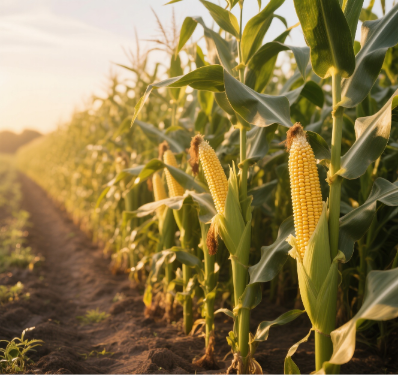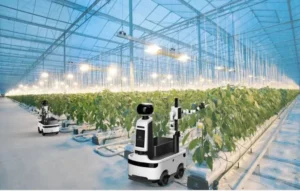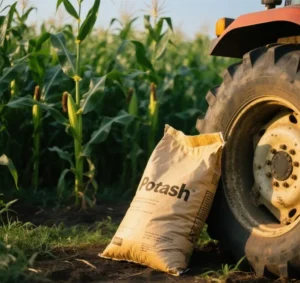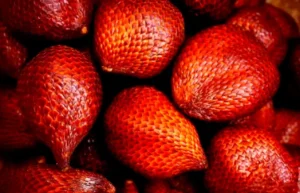As the global population continues to grow and food security challenges persist, agriculture is at a critical juncture. The latest data on genetically modified (GM) crop cultivation in 2024 reveals remarkable growth and complex dynamics, offering insights into the evolving modern farming landscape. In the United States, for example, GM crops account for a significant portion of corn and soybean production, increasing yields and resistance to pests. Similarly, Brazil’s adoption of GM soybeans has increased productivity and reduced the need for extensive land clearance. While GM crops have become integral to many agricultural systems, debates surrounding their environmental impacts, ethical concerns, and sustainability remain central to the discourse. This article explores the key trends, challenges, and potential solutions that are shaping the future of global agriculture, focusing on the impact of specific national policies on cultivation areas.
Global GM Crop Expansion: A Record-Breaking Year
In 2024, global GM crop cultivation reached an unprecedented 209.8 million hectares, marking a 1.9% year-on-year increase and solidifying its role as a staple in modern agriculture. Soybean, maize, cotton, and canola continue to dominate, accounting for 50%, 32.5%, 11.8%, and 5% of the total GM area, respectively. These crops drive agricultural productivity in key regions. The United States and Brazil remain giants in this field, collectively accounting for 68.3% of the global GM area. The U.S. cultivated 75.4 million hectares (+1.3% year over year), while Brazil expanded to 67.9 million hectares (+1.4%). Argentina, despite smaller totals, recorded significant growth at 23.8 million hectares (8.3% YoY), indicating regional shifts in production dynamics. Canada’s area declined slightly (-0.4% to 11.7 million hectares), while India remained the largest GM grower in Asia-Pacific despite a 7.1% contraction to 11.2 million hectares.
| Country | Area (Mha) | Global Share | YoY Change |
| United States | 75.4 | 35.9% | +1.3% |
| Brazil | 67.9 | 32.4% | +1.4% |
| Argentina | 23.8 | 11.4% | +8.3% |
| Canada | 11.7 | 5.6% | -0.4% |
| India | 11.2 | 5.3% | -7.1% |
Regional Disparities and Strategic Shifts: The Role of Policy
Regional patterns reflect market forces and the direct influence of national policies. North America, led by the U.S. (which accounted for 86.7% of the regional share), experienced steady growth driven by consistent regulatory support for GM technology. In contrast, South America’s expansion was fueled by Brazil’s 1.4% increase, bolstered by policies that encourage GM crop adoption and investment in biotechnology research. Argentina’s 8.3% surge also benefited from loosened restrictions on GM crop approvals, demonstrating how policy liberalization can accelerate growth.
The Asia-Pacific region’s GM area declined by 1.8% to 19.4 million hectares, primarily due to India’s 7.1% contraction and Pakistan’s 16.7% reduction. India’s decrease was linked to regulatory uncertainty surrounding GM cotton varieties and delays in approving new traits. Conversely, Vietnam’s GM maize area surged by 93.2% in 2024, spurred by government incentives to increase domestic food production and reduce reliance on imports. The Philippines’ revocation of Golden Rice planting permits in 2024 provides a striking example of the impact of policy reversal. The withdrawal of permits for this genetically modified (GM) rice variety, which was engineered to address vitamin A deficiency, directly led to a halt in cultivation. This highlights the potential consequences of regulatory backlash on both local production and global GM crop trajectories.
Uruguay’s 49.8% increase in GM soybean and maize cultivation was driven by policies that streamlined GM crop approvals and strengthened intellectual property protections for biotech companies. Conversely, Pakistan’s 16.7% decline in GM cotton cultivation was driven by stricter import regulations and farmer resistance to high seed costs, exacerbated by lower cotton prices. These cases underscore how policy shifts, whether supportive or restrictive, can influence adoption rates.
| Region | Area (Mha) | YoY Change | Key Contributor |
| North America | 87.0 | +1.1% | USA (86.7% regional share) |
| Central & South America | 99.7 | +3.5% | Brazil (68.1% regional share) |
| Asia-Pacific | 19.4 | -1.8% | India (57.9% regional share) |
| Europe | 0.066 | – | Spain (primary grower) |
The Sustainability Conundrum: GM vs. Organic
As genetically modified (GM) crops become more widespread, debates over sustainability intensify. Supporters emphasize the role of GM crops in increasing yields, such as pest-resistant cotton, and improving drought tolerance. These advancements are crucial for feeding the projected 9 billion people by 2050. However, critics warn of environmental risks, including pesticide reliance and biodiversity loss, despite advancements in biotechnology that reduce chemical inputs.
Advocates of sustainable agriculture promote organic practices, emphasizing soil health, ecosystem preservation, and natural inputs, such as crop rotation and composting. While organic farming avoids synthetic chemicals and enhances soil fertility, its global scalability is challenging. Studies suggest that organic yields can match those of conventional systems, but they require 25-30% more land, which could exacerbate deforestation if widely adopted.
The key lies in integrated solutions that combine the efficiency of GM with organic principles. In some regions, for example, farmers have successfully implemented precision agriculture techniques, such as using AI and sensors to monitor soil moisture and nutrient levels. This data-driven approach allows them to apply fertilizers only where needed, reducing waste and environmental impact. By combining these modern techniques with organic practices, such as crop rotation, farmers have achieved higher crop yields without compromising soil health. China’s anticipated entry into GM maize and soybean production may test this balance as policymakers weigh productivity against ecological stewardship. The key to success is balancing output with long-term soil health and water conservation.
Key Takeaways and Future Directions
- GM dominance continues. Soybeans and corn will remain pivotal, with South America serving as the growth engine (driven by Brazil’s 1.4% expansion).
- Policy as a Critical Driver: National policies can accelerate (e.g., Vietnam and Uruguay) or impede (e.g., the Philippines and Pakistan) the adoption of GM crops, thereby shaping regional and global cultivation patterns.
- Sustainability Imperative: Future agriculture must prioritize soil health, water conservation, and emission reduction. The role of GM crops in reducing tillage (e.g., herbicide-tolerant soybeans) can support no-till practices and preserve soil carbon.
- Tech-Driven Innovation: AI, biotechnology, and precision tools (e.g., variable-rate fertilization) will help bridge the gap between productivity and environmental goals.
- Global Collaboration Needed: Harmonizing international regulatory frameworks can accelerate the adoption of responsible GM crops while addressing ethical concerns.
Conclusion
The future of global agriculture is a tapestry woven from technology, policy, and sustainability imperatives. As countries navigate the trade-offs between productivity and environmental stewardship, case studies such as Vietnam’s policy-driven surge, the Philippines’ regulatory reversal, and China’s pending entry into GM maize and soybean production highlight the pivotal role of governance. By learning from these examples and embracing integrated farming systems, the world can strive to feed its growing population while safeguarding the planet’s health for future generations.
Key Data at a Glance
- Top GM Cultivators (2024): USA (75.4 million hectares), Brazil (67.9 million hectares), and Argentina (23.8 million hectares).
- Regional Highlights: South America grew by 3.5% (driven by Brazil), while the Asia-Pacific region declined by 1.8% (due to India and Pakistan).
- Policy Impact Cases:
- Vietnam: +93.2% increase in GM maize area due to supportive policies.
- Philippines: The Golden Rice ban halted cultivation.
- Uruguay: +49.8% expansion through regulatory streamlining.
- Pakistan: -16.7% decline due to stricter import rules.
Note: This article integrates data from the International Service for the Acquisition of Agri-biotech Applications (ISAAA) and regional agricultural reports.









